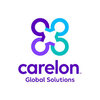Filter interviews by
Triend Software Interview Questions and Answers
Triend Software Interview Experiences
1 interview found
I applied via Walk-in and was interviewed in Sep 2022. There were 3 interview rounds.

Program and mathematical question
(2 Questions)
- Q1. What is the hashtable!?
- Ans.
Hashtable is a data structure that stores key-value pairs and provides constant time complexity for insertion, deletion, and retrieval.
It uses a hash function to map keys to indices in an array
Collisions can occur when two keys map to the same index, which can be resolved using techniques like chaining or open addressing
Examples of hashtable implementations include Python's dict, Java's HashMap, and JavaScript's Map
- Q2. Explain oops concept
- Ans.
OOPs is a programming paradigm based on the concept of objects that interact with each other.
OOPs stands for Object-Oriented Programming.
It focuses on creating objects that have properties and methods.
Encapsulation, Inheritance, and Polymorphism are the three main pillars of OOPs.
Encapsulation is the process of hiding the implementation details of an object from the outside world.
Inheritance allows a class to inherit p...
Interview Preparation Tips
Skills evaluated in this interview
Web Developer Interview Questions asked at other Companies
Top trending discussions






Interview questions from similar companies

Senior Software Engineer Interview Questions & Answers
OpenText Technologiesposted on 28 Feb 2025
I was interviewed in Sep 2024.
(5 Questions)
- Q1. Write a program in .NET that outputs the characters appearing more than two times consecutively in a given string.
- Q2. If there are five microservices, labeled as microservice one, microservice two, microservice three, microservice four, and microservice five. Microservice three breaks. Requests from microservice two to ...
- Q3. What is an abstract class, and why is it necessary to use an abstract class when interfaces already exist?
- Q4. What design patterns have you utilized in your projects?
- Q5. Can you illustrate the architecture of your application?
(10 Questions)
- Q1. Given a list of strings that may contain duplicates, return a list of the duplicate strings using the most efficient approach.
- Q2. Could you explain what your application does and the types of technology it utilizes?
- Q3. When should we use MS SQL and NoSQL databases?
- Q4. Which NoSQL database would you choose as an alternative to Elasticsearch, and what are your reasons for that choice?
- Q5. What are the differences between MongoDB and PostgreSQL?
- Q6. What are the differences between conventional URLs and attribute URLs in .NET Core Web API?
- Q7. What is the working mechanism of OAuth authorization?
- Q8. What steps do you take to ensure that an application remains maintainable?
- Q9. Which design patterns have you utilized in your work?
- Q10. How does Repository Pattern help in maintaining your codebase

Softwaretest Engineer Interview Questions & Answers
Automatic Data Processing (ADP)posted on 25 Jan 2025
I was interviewed in Dec 2024.
A standardized assessment that measures a person's skills, cognitive abilities, and potential to perform in a specific role.
(4 Questions)
- Q1. Technical interview questions at Automatic Data Processing (ADP) may cover topics such as programming, databases, and software development.
- Q2. They may also ask about problem-solving and how you approach challenging tasks.
- Q3. Emphasize a structured method that involves clearly defining the issue, gathering relevant information, brainstorming potential solutions, evaluating options carefully, implementing the chosen solution, an...
- Q4. Data structures, algorithms, SQL querying, object-oriented programming principles, software development lifecycle, database concepts (relational vs. NoSQL), coding challenges in relevant languages (like Py...
(2 Questions)
- Q1. May ask about your background, skills, and how you handle challenges
- Q2. Background questions Tell me about yourself, What are your career goals, What are your strengths and weaknesses, What do you know about ADP, and Why do you want to work at ADP.
Interview Preparation Tips

I was interviewed in Jan 2025.
Numerical reasoning : Tests mathematical skills,such as number sequences,percentages,and ratios.
(6 Questions)
- Q1. What is the difference between static and dynamic typing in python?
- Q2. What is the difference between list and touple in python?
- Q3. Data structures and algorithms
- Q4. Object oriented programming
- Q5. File handling and database
- Q6. Advanced python topics
Gd Topics:
1.Current affairs
2.Business and Economy
3.Social and Cultural
(6 Questions)
- Q1. CN you tell me about your self?
- Q2. Why do you want to work as a python developer?
- Q3. Career goals and motivation
- Q4. Team work and communication
- Q5. Problem solving and adaptability
- Q6. Behavioral questions
Interview Preparation Tips
2.practice interview skills
3.Follow the interview tips

Trainee Quality Engineer Interview Questions & Answers
KPIT Technologiesposted on 28 Feb 2025
I went through the college placement process. The first round consisted of a combination of coding and aptitude tests.
(3 Questions)
- Q1. What is the difference between a microcontroller and a microprocessor
- Q2. What is pwm
- Q3. Explain about your project

Discussion on General Topics
General Aptitude test
(2 Questions)
- Q1. Technical Questions on Windows and Mac
- Q2. Troubleshooting Shooting on different scenarios
(1 Question)
- Q1. More Aggressive Questions on Troubleshooting
(1 Question)
- Q1. One On One With the Hiring Manager

(20 Questions)
- Q1. Explain the difference between ArrayList and LinkedList in Java. When would you choose one over the other?
- Q2. What are the advantages and disadvantages of using Java’s synchronized keyword for thread synchronization? Can you explain how the ReentrantLock compares to synchronized?
- Q3. What is the difference between == and .equals() in Java? When should each be used, and what issues can arise from improper usage?
- Q4. How does the Java garbage collector work? Can you describe the different types of garbage collection algorithms available in Java?
- Q5. What are the main features of Java 8? Can you explain how lambdas and the Stream API have changed the way Java applications are written?
- Q6. Describe the differences between checked and unchecked exceptions in Java. Provide examples and explain how to handle them properly.
- Q7. What is the Java Memory Model, and how does it affect multithreading and synchronization? How does volatile help ensure memory visibility?
- Q8. Can you explain the difference between method overloading and method overriding in Java? Provide examples where each should be used.
- Q9. What are functional interfaces in Java? How do they work with lambda expressions? Provide an example of a custom functional interface.
- Q10. What is a Java Stream, and how does it differ from an Iterator? Explain how Streams can be used to process collections efficiently.
- Q11. Explain the concept of immutability in Java. How does the String class achieve immutability, and what are the advantages of immutable objects?
- Q12. What is the difference between final, finally, and finalize in Java? Provide examples to illustrate their usage.
- Q13. Explain the Singleton design pattern in Java. How can you implement it safely to ensure thread safety?
- Q14. What are Java annotations, and how are they used in frameworks like Spring? Explain the difference between built-in and custom annotations.
- Q15. How do Java Streams handle parallel processing? What are the potential pitfalls of using parallel streams, and how can they be mitigated?
- Q16. Explain the difference between ArrayList and LinkedList in Java. ArrayList is implemented as a dynamic array, while LinkedList is a doubly linked list. ArrayList provides fast random access (O(1) complexi...
- Q17. What are the advantages and disadvantages of using Java’s synchronized keyword for thread synchronization? The synchronized keyword ensures that only one thread can access a block of code at a time. It pr...
- Q18. What is the difference between == and .equals() in Java? == checks for reference equality, meaning it compares memory addresses. equals() checks for value equality, which can be overridden in user-defined...
- Q19. How does the Java garbage collector work? Garbage collection in Java automatically reclaims memory occupied by unused objects. The JVM has different types of GC algorithms, including Serial, Parallel, CMS...
- Q20. What are the main features of Java 8? Java 8 introduced lambda expressions, enabling functional-style programming. The Stream API allows efficient data processing with map, filter, and reduce operations. ...

I was interviewed in Aug 2024.
(2 Questions)
- Q1. What are the three types of data extensions?
- Q2. How many complex journeys you have worked on?
(2 Questions)
- Q1. Would you be able to handle a client when something is messed up?
- Q2. Are you open for shifts?

I applied via Company Website and was interviewed in Dec 2024. There were 3 interview rounds.
Basic self evaluation test.
(3 Questions)
- Q1. What project I have completed and follow-up questions on that?
- Q2. How to handle class imbalance.
- Ans.
Handling class imbalance involves techniques like resampling, using different algorithms, and adjusting class weights.
Use resampling techniques like oversampling or undersampling to balance the classes.
Utilize algorithms that are robust to class imbalance, such as Random Forest, XGBoost, or SVM.
Adjust class weights in the model to give more importance to minority class.
Use evaluation metrics like F1 score, precision, r...
- Q3. Basic Python coding questions.
(2 Questions)
- Q1. Data-related questions.
- Q2. ML Ops questions.
Interview Preparation Tips
- Python
- MLOPS

Senior Performance Test Engineer Interview Questions & Answers
Globantposted on 7 Feb 2025
I was interviewed in Jan 2025.
(1 Question)
- Q1. All questions related to Process and Tool level and Analysis.
(1 Question)
- Q1. Performance testing questions
(1 Question)
- Q1. Loadrunner questions
(1 Question)
- Q1. Process and Tool level questions
Triend Software Interview FAQs
Tell us how to improve this page.
Interview Questions for Popular Designations
Interview Questions from Similar Companies
Triend Software Reviews and Ratings
based on 1 review
Rating in categories
|
Java Developer
8
salaries
| ₹2.4 L/yr - ₹6.5 L/yr |
|
Software Engineer
4
salaries
| ₹3.2 L/yr - ₹5.8 L/yr |
|
Software Consultant
4
salaries
| ₹4.5 L/yr - ₹5 L/yr |

Oracle

Amdocs

Automatic Data Processing (ADP)

Carelon Global Solutions
- Home >
- Interviews >
- Triend Software Interview Questions








